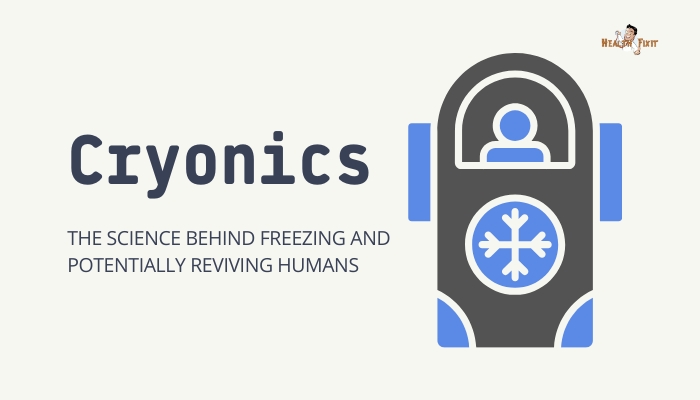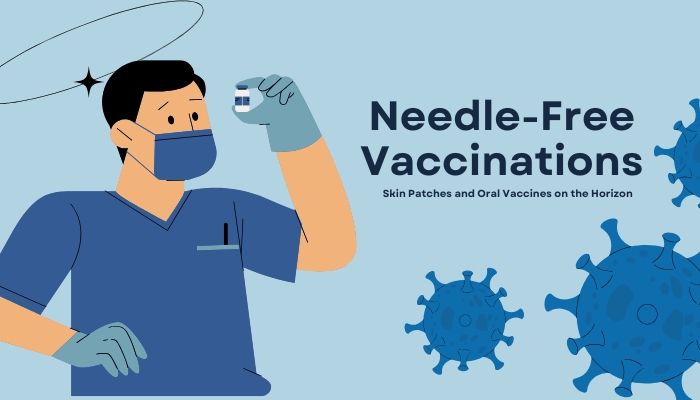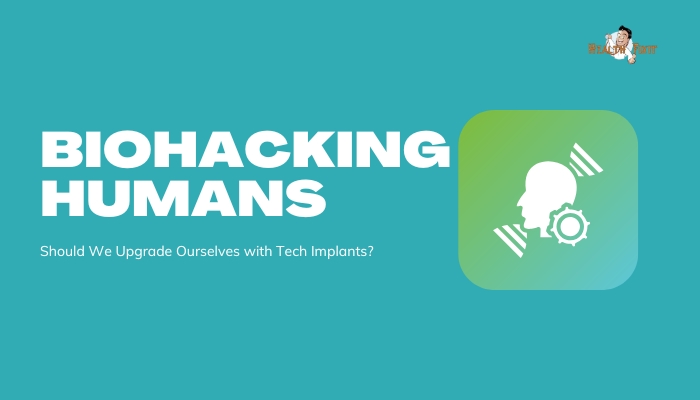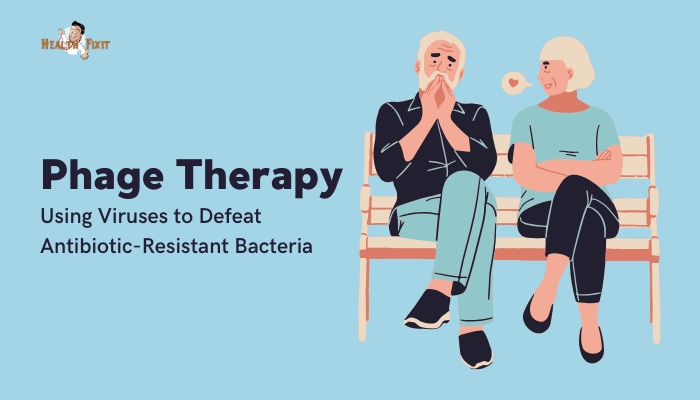Introduction
Imagine dying, only to be meticulously cooled to sub-zero temperatures, your tissues preserved until future medical breakthroughs can heal and revive you
This is the vision of cryonics: the practice of freezing humans (and sometimes pets) at the moment of legal death, with the hope that new technologies will someday reverse both the cause of death and the effects of cryopreservation
While it borders science fiction in many minds, serious advocates and organizations exist worldwide, preparing for an unknown future where advanced medicine might bring patients back.
This article dives into the core processes of cryonics, the scientific rationale, the controversies, and the challenges that must be overcome before any possibility of revival becomes real.
The Basic Idea of Cryonics
Preserving the Body for the Future
Cryonics is not about immediate reanimation. Instead, the body (or sometimes just the head) is cooled to –196°C in liquid nitrogen,
aiming to halt biochemical decay indefinitely. The idea is that, in decades or centuries, medicine could repair lethal damage—be it from aging
, disease, or the freezing process itself—and restore the individual to active life.
Legal Death vs. Biological Death
Most cryonics protocols begin only after a person is legally declared dead—no heartbeat or respiration
. Cryonicists argue that death at this stage might be reversible if the “information” in the brain (the connectome or memory structures) is still physically intact,
just shut down by lack of blood flow. Speed is crucial to minimize damage before cooling begins.
The Cryopreservation Process
Standby and Stabilization
Cryonics organizations—like Alcor or the Cryonics Institute—sometimes offer “standby teams” who arrive quickly after legal death.
They start cardiopulmonary support to maintain minimal blood flow and oxygenation. This keeps tissues somewhat viable while preparing for the next steps.
Cryoprotective Perfusion
Before deep freezing, the body undergoes perfusion with cryoprotectants—chemicals that replace blood and water in cells.
This step, known as vitrification, aims to reduce ice crystal formation, which can cause cellular damage. The solution is somewhat analogous to antifreeze, preventing large ice crystals from tearing cell membranes.
Cooling to Liquid Nitrogen Temperatures
Gradual cooling is essential to avoid thermal shock. Once vitrification is complete, the temperature is lowered stepwise over hours or days until the body reaches about –196°C in liquid nitrogen. At this state, molecular motion is almost nil, and chemical degradation halts.
Long-Term Storage
Finally, patients are placed in dewars—large vacuum-insulated tanks—for indefinite storage. Because liquid nitrogen passively evaporates,
no electricity is required to keep them frozen. Regular top-offs ensure the nitrogen level stays high. The body remains in cryostasis, awaiting a future attempt at revival.
Potential for Revival
Hypothetical Future Medicine
Cryonicists anticipate that future nanotechnology or advanced regenerative medicine could repair cellular damage from disease and from freezing. Moreover,
advanced neuroscience might restore normal brain function if the structures encoding memory and personality remain physically intact.
Challenges to Overcome
- Ice Damage: Even with cryoprotectants, some crystallization or fracturing can occur, especially in large organs.
- Cellular Repair: Tissue fracturing, protein denaturation, or microvascular damage must be reversed.
- Neurological Complexity: Rebooting a cryopreserved brain, ensuring cognition and memory return, is arguably the biggest unknown.
- Legal and Ethical Issues: Revival would require a supportive regulatory environment and clarity on identity and property rights upon reanimation.
No Proof of Concept
At present, no mammal or human has been cryopreserved and revived. Certain organisms—some frogs,
tardigrades—survive extreme cooling, but the complexity and scale differ from a human body. Thus, cryonics remains an unproven bet, reliant on future breakthroughs that may or may not materialize.
Scientific Debates and Controversies
Skepticism from Mainstream Science
Many scientists argue that molecular damage from the freezing process is too extensive. They believe the tissue,
especially the brain, might not be functionally salvageable, making the prospect of reanimation unrealistic. Others maintain that while improbable, it’s not outright impossible if technology keeps advancing.
Philosophical and Ethical Quandaries
Cryonics challenges our notions of death. Is a cryopreserved individual “deceased” or in stasis? If reanimated centuries later,
what rights or identity do they hold? Additionally, critics worry about offering false hope to terminal patients seeking to “escape” mortality, tying up resources in what might be a dead-end pursuit.
Cost and Inequality
Cryonics can be expensive—ranging from tens to hundreds of thousands of dollars—often financed by life insurance policies. This price tag fosters concerns about an immortality option available only to wealthier individuals, deepening societal inequality.
Current Cryonics Organizations
Alcor Life Extension Foundation
Based in Arizona, Alcor is among the most prominent. They store dozens of patients—some the entire body, others just the head (neuro option). Alcor invests in research to refine vitrification protocols and minimize ice damage.
Cryonics Institute
Founded by Robert Ettinger, author of The Prospect of Immortality, the Cryonics Institute in Michigan also provides cryopreservation services, sometimes at a somewhat lower cost, focusing on whole-body storage for members.
Smaller Services and Global Growth
A handful of smaller companies worldwide offer preservation. Some labs focus more on brain preservation for future “mind uploading” attempts, bridging cryonics with digital immortality efforts. The field remains niche but is slowly expanding internationally.
Future Outlook
Advances in Vitrification and Nanomedicine
Refining cryoprotectants to reduce ice crystal formation and nerve damage is an ongoing objective. Meanwhile, future nanomedicine—tiny robots or molecular machines—could, in theory, rebuild cells from within, reversing the micro-fractures or biochemical disruptions caused by cryopreservation.
Hybrid Approaches
If partial organ or tissue regeneration becomes routine (e.g., for heart or lung), such methods might be extended to fully cryopreserved bodies. Alternatively, it might be used in short-term “clinical hibernation” for severe trauma patients, bridging them to advanced surgery.
Skeptical or Realistic Timelines
Some advocates think real reanimation might lie only decades away, given the pace of exponential technologies
. Others suspect centuries might pass—if at all. Undeniably, the domain sits at the fringes, requiring leaps in biology, neurology, and robotics that are still hypothetical.
Practical Tips for the Curious
- Check Reputable Organizations: If exploring cryonics, scrutinize the track record, finances, and scientific claims of any service.
- Understand Limitations: This is an unproven technology with no guaranteed outcome. Treat it as an experimental practice rather than a sure path to future life.
- Legal and Estate Planning: If you do sign up, incorporate it into your will, clarify your intentions, and ensure resources for annual cryonics membership fees.
- Stay Updated: Monitor breakthroughs in cryobiology, tissue engineering, or neural restoration. Real progress in these fields might pivot cryonics from speculation to a more credible possibility.
Conclusion
Cryonics merges the dream of conquering death with the frontier science of preserving human bodies at ultra-low temperatures.
While the underlying concept evokes hope—especially for terminally ill patients—a sobering reality remains: no proven method to revive a cryopreserved person currently exists, and the technical barriers loom large. Nonetheless, the field persists, driven by visionary entrepreneurs, enthusiasts,
and researchers seeking a shot at future medical wonders. Whether cryonics eventually becomes a mainstream extension
of end-of-life care or remains a niche bet on tomorrow’s science, it stands as a bold testament to humanity’s drive to push the boundaries of mortality.
References
- Fahy GM, Wowk B, Wu J, et al. Cryopreservation of organs by vitrification: perspectives and recent advances. Cryobiology. 2004;48(2):157–178.
- Best BP. Cryoprotectant toxicity: facts, issues, and questions. Rejuvenation Res. 2015;18(5):422–436.
- Lemler J, Harris SB, Platt C, Huffman T. The arrest of biological time as a bridge to engineered negligible senescence. Ann N Y Acad Sci. 2004;1019:559–563.
- Wowk B. Thermodynamics of vitrification of biological tissues. Cryobiology. 2010;60(1):11–22.
- Olson DG. The gift of immortality? A legal & ethical approach to cryonics. J Law Biosci. 2021;8(2):lsab019.
- McKie R, et al. The viability of cryonics. Lancet. 2017;390(10108):1345–1346.
- Henderson, M. The relationship between cryonics and transhumanist beliefs. Sci Tech Soc. 2016;21(3):497–508.
- Alcor Life Extension Foundation. Alcor.org (official website). Accessed [date].
- Cryonics Institute. cryonics.org (official website). Accessed [date].
- Shi R, Burns T. Tissue engineering and regenerative medicine: bridging cryonics? Tissue Eng Part B Rev. 2020;26(1):1–7.





